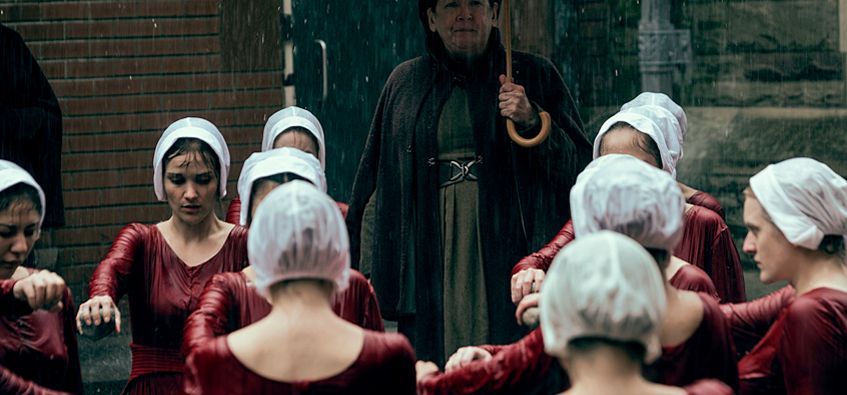
“The Handmaid’s Tale,” “Black Mirror,” and the bleak futrue of abortion on TV
April 29, 2018Co-written with Gretchen Sisson
Viewers return to the Republic of Gilead this week, as “The Handmaid’s Tale” begins its second season on Hulu. This season, the map of Gilead will extend beyond the imagined limits of Margaret Atwood’s 1985 novel, from the toxic concentration camps of the Colonies to the gallows installed in the outfield of Fenway Park. The show’s incorporation of these hauntingly familiar visuals, and its allusions to modern technological standbys like Uber, Tinder and Craigslist, brings to life the most disturbing aspect of Atwood’s original work: this future is real enough, and near enough, to make audiences feel that this could be our reality. And this could-be reality rests entirely on the absolute regulation of women, their bodies and their reproduction.
The renewed reception to the decades-old “The Handmaid’s Tale,” along with the popularity of Leni Zumas’s current bestseller Red Clocks, shows audiences seeking out dystopian stories that, in many ways, reflect and respond to our current political landscape, including escalating attacks on reproductive rights. These, and other stories like them, portray worlds in which women’s ability to control their own reproduction, and particularly to access safe abortion, is nonexistent. In this, grim and unjust futures typify the fictional offerings — at least as far as abortion is considered.